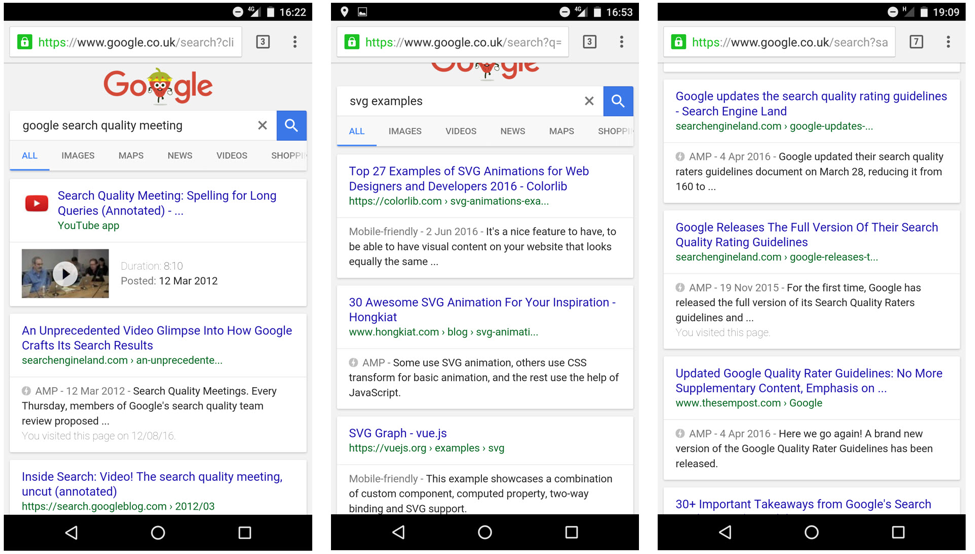
These 4 SEO Techniques Can Result in a Google Penalty
Search engine optimisation or SEO is one of those fields that are constantly evolving. There are some SEO techniques that were extremely popular and efficient just a few years ago. However, now those same techniques could land you in trouble.
If you continue using old and outdated SEO techniques that Google and other search engines have blacklisted, you might end up with a Google penalty. It can be then very difficult for you to recover from that search engine penalty — especially in a fast-paced digital marketing world where businesses are competing neck and neck.
The problem, however, is that identifying these SEO mistakes that you might be committing can be difficult. Therefore, in this blog post, we share a list of 4 such SEO techniques that will result in a Google penalty if you are still using them.
Let’s see what these outdated SEO techniques are. So if you are using any of them, you could stop right away and steer your SEO efforts in the right direction.
1. Outdated Keyword Optimisation
First of all, let us state it clearly.
Keyword optimisation is not dead.
Contrary to common belief, keyword research and keyword optimisation are still important aspects of search engine optimisation. Without picking the right keywords and strategically using them in your website, you would find it difficult to get higher in the SERPs.
However, having said that, the outdated keyword optimisation (or keyword stuffing) methods certainly do not work anymore.
In fact, relying on outdated keyword stuffing methods would get you penalized.
How to identify if you’re guilty of keyword stuffing?
Before you publish a piece of content, if you are still thinking about the keyword density, you might be guilty of outdated keyword stuffing.
In this new SEO world, you don’t have to worry about keyword density. In an attempt to maintain a certain level of keyword density, you stuff keywords and make your content look spammy.
Google notices that.
Moreover, it also leads to a bad user experience — which is another factor that leads to Google penalties.
Instead of worrying about keyword density and stuffing, focus on creating the best piece of content on a given topic. If you are contextually relevant and have used the keyword even once, it would be enough.
2. Pointless Press Releases
It used to be a very old technique, but it’s surprising how many SEOs still rely on that.
They usually use this method because it appears to be an easy way out and rank a certain web page for a particular keyword.
But Google has evolved past this, and now this method does not work.
In this method, SEOs would write dozens of pointless and nonsensical press releases and publish them on various websites. They would also use a specific keyword phrase (for which they’d like their web page to rank for) and create backlinks using that keyword phrase as the anchor text.
The only time you should issue a press release is when you have some noteworthy news. If you don’t have an exciting update or news to share, don’t write a press release just for backlinks.
3. Exact Match Anchor Text Links
Apart from issuing countless press releases, another technique is to create dozens of internal links (from other web pages on your site) to a particular web page that you want to rank for.
And as you must have guessed, all those links would use a particular keyword or keyword phrase as the anchor text — the same keyword phrase that you want to rank for.
While there is nothing wrong in creating internal links — it is recommended, in fact — but it should be natural.
It should not be forced for the purposes of search engine rankings.
Internal links are used to redirect users for contextually relevant web pages where users could get relevant and useful information.
Furthermore, anchor text diversification is important anyway.
If all the links to a web page are pointing with the same keyword or keyword phrase, it is likely to result in a search engine penalty.
4. Thin Content
Are you still writing 300-word blog posts?
Depending on your industry, it might be counted as ‘thin’ or ‘shallow’ content.
Blog posts are usually now 1,000+ words. In fact, blog posts with 2,000+ words perform significantly better than anything less than that.
Google seeks in-depth content to show to its users. If there is a battle going on between a 300-word thin piece of content with a 2,500+ word in-depth blog post, the latter would almost always win — even if it is not from a very powerful website with lots of backlinks.
Invest in content marketing.
Create highly detailed and useful blog posts that are 1,000, 2,000, or even 3,000+ words long. Give your readers something extra, and Google will reward you for that.
Parting Advice
Using these 4 SEO technique won’t be easy.
After all, writing a 400-word “blog post” is much easier than writing a 3,500-word in-depth guide. But it all pays off.
Make sure to avoid any of these 4 SEO techniques that we just highlighted or else you might end up with a Google penalty.








